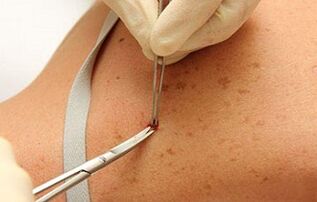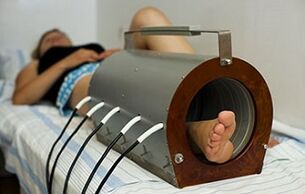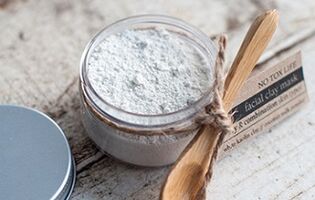Psoriasis is a chronic skin disease. Manifested in the form of rashes. The initial stage is characterized by symptoms that are similar to the clinical picture of other epidermis pathologies. To prevent the progression of the disease, to facilitate its course, it is necessary to differentiate the pathology. To do this, you need to know the symptoms, manifestations of psoriasis at different stages.
Causes in adults and children
Why psoriasis occurs in children and adults, medical scientists have not yet understood exactly. There is only speculation as to the cause of the development of this disease. So there is an assumption that psoriasis can be inherited: in people whose parents suffered from such a skin disease, psoriatic rash is often observed. Some doctors link the development of pathology with immunological instability, metabolic disorders, and the presence of a chronic infection. In most patients, doctors notice severe hyperlipidemia.
To check susceptibility to such a disease, you need to do a classic genome analysis. Those with ten chromosome locations are more likely to develop psoriasis. The main genome responsible for congenital predisposition is PSORS1.
Psoriasis can develop at any age: in children, young men and women, the elderly. In adults, according to medical scientists, the following factors provoke the disease:
- low immunity;
- chronic fatigue;
- alcohol abuse;
- severe stress;
- poor hygiene;
- continuous eating;
- insect bites;
- infectious pathologies (influenza, ARVI); vaccine
- ;
- temperature change;
- vitamin deficiency;
- smoking;
- long-term medicines;
- djeg;
- allergies;
- hormonal imbalance;
- climate change;
- improper nutrition.
Children most often experience psoriatic outbreaks:
- after sore throat;
- if there is a chronic infection in the body;
- with low immunity.
Psoriasis should not be started:people with this diagnosis increase the risk of early atherosclerotic vascular lesions and the occurrence of cardiac pathologies. There is also a threat of arthritis.
Psoriasis is most commonly seen in people with poor heredity.
How psoriasis manifests

Psoriasis is characterized by the appearance of large plaques on the skin. Spots are initially insignificant and appear in those parts of the body where the skin is thicker (on the elbows, knees). Such formations explode. When scratched, sores appear, which whiten in the morning.
The disease is characterized by the following manifestations:
- Stearine stain.These are small scaly papules fused to the plates.
- Terminal movies.Under the psoriatic plaques, there is a thin, bright pink skin. Her doctor can see after removing all the scales.
- Accurate bleeding(bloody dew syndrome). When the terminal film is damaged as a result of the removal of the cornea of the epidermis layer, blood spots appear.
Such manifestations in aggregates are called psoriatic triads. They are detected during a sample of the inflamed skin area.
Psoriasis also has the following symptoms:
- formation of new papules in case of skin damage and an increase in the area of the lesion;
- blush elements have a dense structure;
- has a red edge around the plate;
- weakness;
- the presence of a white lip three millimeters pseudo-atrophic around the rash;
- purulent odor from the skin (when pustules form);
- the phenomenon of oily formation, in which a yellow-brown spot appears under the nail plate;
- proliferative acanthosis, in which the skin thickens, interpillary processes are prolonged;
- finger symptoms (psoriasis of the nails);
- zgjebe.
Since psoriasis is a chronic pathology, its symptoms begin to disappear after a while, the wounds heal. But then papules form again.
The first symptoms of the onset of the disease
In the first stage of psoriasis, a rash always appears.
At first, it is almost invisible, with no characteristic scale. Some rash spots appear on the limbs.

After a few weeks, the number of affected areas increases. The rash joins into large plates, which are covered with silvery scales. Itching in the early stages of psoriasis is moderate. The person complains of chronic fatigue, weakness.
Such symptoms are also characteristic of allergic skin reactions, dermatitis and herpes. Therefore, it is important to make a differential diagnosis.
During the examination, the doctor discovers the psoriatic triad. From the size of the rash, the doctor determines the etiology of psoriasis: in the form of spots, dots or in the form of coins.
Signs of a progressive stage of the disease
As the disease progresses, the number of papules increases, the rash spreads to healthy areas of the body. The slightest scratch, bump or burn will cause a joint rash. The second phase lasts a long time. On touch, you can find dense borders between inflamed areas of the epidermis. The tiles have a striking border with a bright color and is covered with scales.
In the last stage of the disease, the symptoms begin to gradually disappear. Tiles become lighter, their borders fade. After a while, the papules disappear, in their place remains dry skin, hyperpigmented spots.
The temperature in psoriasis can only rise in the presence of an inflammatory process, suppuration of the acne. Then the affected areas can be damaged.
What is the phenomenon of stearic spots
Stearin spots are the main symptoms that form the psoriatic triad. It is a small area with papular elements of redness, which are very light. The more the doctor scratches the affected skin, the more flaking appears. During manipulation, the person experiences no pain. The phenomenon got its name because the detached flakes of skin look like stearine spots.Where it first appears: localization of rashes
First, psoriatic outbreaks form on the elbows, feet, and knees. Then the papules spread to areas of the body with thinner and more delicate skin: on the lower leg, lower back, wrist, abdomen, groin area, head. The rash may be localized elsewhere. But these areas of the body are most often affected by psoriasis.
In the absence of proper treatment, the disease spreads to the nails, mucous membranes, joints.
Localization of psoriatic rash in adults can be:
- Koka. The rash is noticed on the scalp, in the ears, on the back of the head, in the eyebrow area, eyelids, eyes, nasolabial folds.
- Lower limbs.
- Elbows. Scaly plates form that approximate over time.
- Upper limbs. A small rash similar to urticaria occurs.
In children, rashes usually appear in:
- legs;
- vithet;
- skin folds;
- elbows;
- scalp.
How does scaly lichen on the head start
Scaly lichen can spread throughout the body. It is usually acute. A rash is formed by a sphere which is on a pea. The papule is covered with silvery and white scales. The rashes increase in size over time, merging into a focus with uneven edges. This tile has a clear boundary. When the scalp is affected by psoriasis, a psoriatic crown is formed: red pustules with purulent contents appear behind the ears and along the forehead line.
How quickly the pathology develops
How quickly psoriasis develops depends on its form. So the type of pathology in the form of spots is distinguished by the ability to appear suddenly and disappear. Severe plaque psoriasis is characterized by the gradual spread of pustules throughout the body. The rash is then covered with flaking scales in a short period. The rashes coalesce, forming large plaques.
Diagnostic methods

If psoriasis is suspected, see a dermatologist. The doctor makes an assumed diagnosis based on the patient's complaints and examination. The doctor makes a recommendation to undergo laboratory, instrumental research. Differential diagnostics are also performed.
As the disease progresses, it is recommended that you donate blood for tests to detect an acute, autoimmune or rheumatic process. In severe situations, a biopsy is also performed, which shows the accumulation of Rete bodies, thickening of the layer, infiltration of the skin with polyblasts, T lymphocytes, dendritic cells, increased angiogenesis under the psoriatic plaques.
For the differential diagnosis, perform:
- allergy test;
- serum biochemical test;
- stool analysis for dysbiosis;
- histological examination of the biopsy.
No special tests are required to diagnose psoriasis in children. Pathology is detected on the basis of examination of the elements of the rash.
How to treat psoriasis
Since psoriasis is considered a chronic condition, it cannot be completely cured. The goal of therapy is to achieve lasting forgiveness and eliminate complications. To do this, use medication, physiotherapy, folk methods. In severe cases, the patient is hospitalized. In the initial stage, the therapy is allowed to be performed at home.
Clinical therapy
To treat psoriatic lesions, doctors prescribe antihistamines to relieve swelling, itching, and redness.

Enzymatic agents are also used. They stimulate the body to produce the necessary enzymes. Damage to the skin of the body provokes discomfort, tightness.
Realizing that an illness cannot be cured causes psychological problems. Therefore, doctors prescribe sedatives to help restore emotional state.
Hepatoprotectants are used to improve liver function. Inflammation and itching can be relieved by nonsteroidal anti-inflammatory drugs. Immunomodulators are prescribed to strengthen the body.
Physiotherapy techniques are also used. They help to remove pigmentation and speed up healing. Doctors recommend:
- selective herbal medicine;
- laser skin treatment;
- ultrasound treatment;
- magnetotherapy.
In a hospital, the patient is under constant medical supervision. Therefore, it is easy to trace the effectiveness of the prescribed treatment regimen, to make timely adjustments of the applied therapy.
Home treatment
After discharge from the hospital, treatment continues. To maintain normal health, to achieve a lasting remission, doctors prescribe a number of medications in one course. Vitamin complexes, oils, folk remedies are used.
The patient is recommended to treat the areas of the skin affected by psoriasis daily with hormonal and non-hormonal oils.
To improve the condition of the epidermis, dermatologists prescribe vitamins. Vitamins A, E, D and C are especially helpful in fighting psoriasis. They strengthen the body's defenses, help restore and cleanse the skin.

Traditional healers suggest the use of activated charcoal. One of the main reasons for the development of psoriasis is metabolic disorders, intoxication. Activated carbon acts as an absorber, therefore cleanses the body well of harmful substances. It should be consumed for a month, twice a day, in a dose of 1 tablet per kilogram of body weight.
White clay helps skin recovery. It relieves inflammation, dries, relieves itching. Baths with the addition of sea salt are also useful.
When treating psoriasis at home, it is recommended that you follow a few rules:
- Take medication prescribed by your doctor at the indicated dose.
- Treat the skin with oils and creams.
- Carefully remove the peels after they have softened.
- Take air and sun baths.
- Avoid stressful situations.
- Observe the daily routine, the diet.
- Rest enough.
- Take breaks while taking medication.
Thus, psoriasis is a serious chronic disease. The reasons for its development have not been precisely established, only provocative factors are known. The disease has characteristic symptoms, but in the first stage it is similar to other skin pathologies. To identify and begin treatment of the disease in time, you should contact a dermatologist when a suspicious rash appears.























